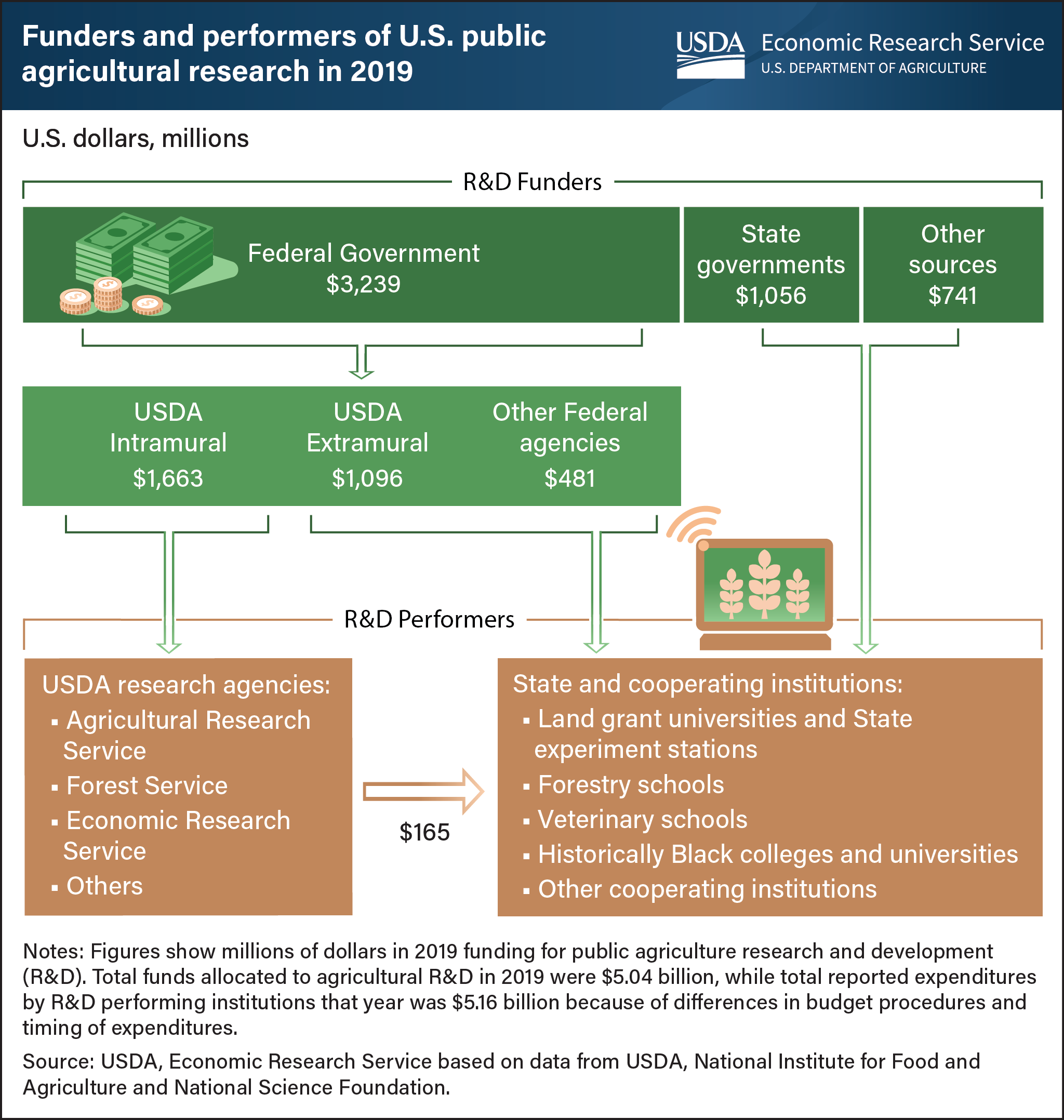Federal Government is primary funder of U.S. agricultural research and development
- by Kelly P. Nelson and Keith Fuglie
- 6/14/2022

The Federal Government provides 64 percent of public agricultural research and development (R&D) funding in the United States. State governments and non-governmental sources, including funds generated by the universities themselves, account for the other 36 percent of funds for public agricultural R&D. Federal funds are delivered via external grants to universities and other cooperating institutions, and through appropriations to USDA agencies. Most of the Federal funding for agricultural research performed by non-Federal institutions is managed by USDA’s National Institute of Food and Agriculture (NIFA). NIFA allocates these funds through capacity grants to land grant and minority-serving institutions as well as through competitive grants that are open to all universities. Of the $1.663 billion in outlays for agricultural research by USDA research agencies (primarily the Agricultural Research Service, Economic Research Service, and the Forest Service), about $165 million was allocated to cooperative research agreements with universities. The National Science Foundation, the National Institutes of Health, and other Federal agencies are also important funders of agricultural R&D, accounting for about 15 percent of the Federal total. Agricultural research funded by these agencies is performed primarily at universities. This chart appears in the ERS’s Amber Waves article, “Investment in U.S. Public Agricultural Research and Development Has Fallen by a Third Over Past Two Decades, Lags Behind Major Trade Competitors,” published June 2022.

